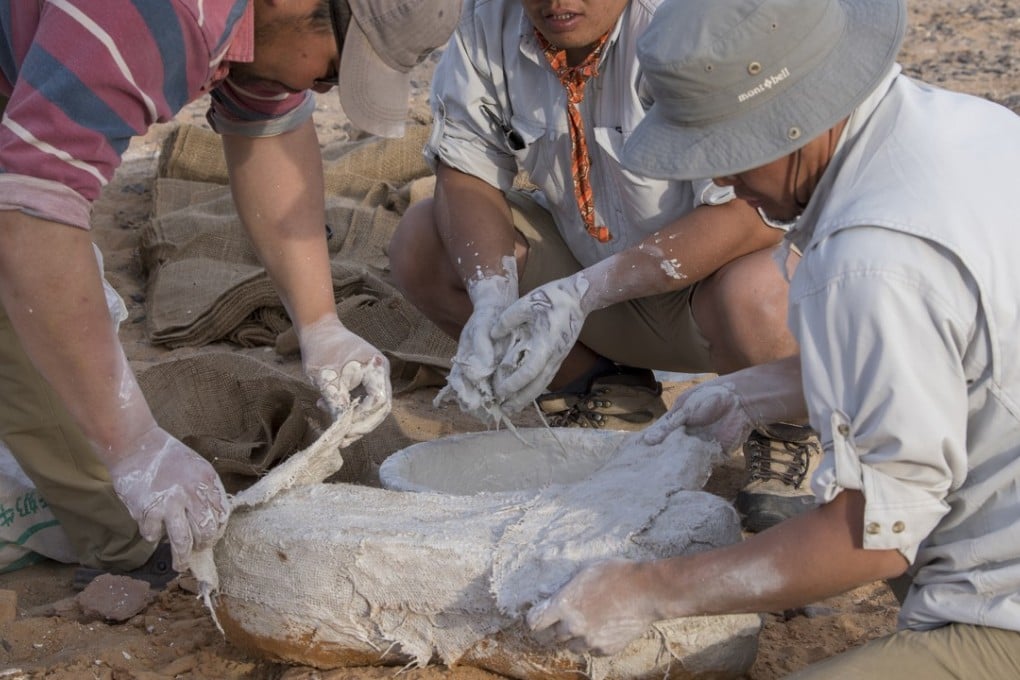Hong Kong dinosaur hunters make amazing discoveries in Mongolia while retracing steps of famous 1920s explorer
Almost a century after Roy Chapman Andrews led an expedition across the Gobi Desert and uncovered the first nest of dinosaur eggs ever found, Explorers Club Hong Kong employs Nasa technologies to see what is left to discover

Dressed in sturdy boots and khakis, Chinzo, for short, is a PhD fellow at the Institute of Palaeontology and Geology at the Mongolian Academy of Sciences, in the capital Ulan Bator. He is examining the windswept slopes for traces of ancient fauna. We are part of an international team searching for dinosaur fossils in the Gobi Desert.
I glimpse a flash of white next to a large boulder. Instinctively, I know it’s not a stone and scratch away at the encasing mud with my fingers. I shout over to Chinzo, who joins me in excitement. Other colleagues are quickly at hand and together we carefully remove more of the mud and sand.
“It is probably the skull top of a Tarbosaurus,” Chinzo says. Seeing my blank expression, he adds, “Tarbosaurus is the cousin of the North American Tyrannosaurus rex. These were the most intimidating predators that have ever lived.”
Ever since the first fossils were found and catalogued in the early 19th century, dinosaurs have enriched the fantasies of children – and not a few adults. One of those fascinated youngsters was American Roy Chapman Andrews. Born in 1884 and driven to explore from a young age, he would become a scientist, an adventurer and a daredevil; the role model for George Lucas’ legendary character Indiana Jones, some say.
In the early 1920s, following a number of successful expeditions across China, he convinced several wealthy American businessmen, among them John D. Rockefeller and J.P. Morgan, to back a series of expeditions into the Mongolian Gobi. The main aim of what would later be known as the Central Asiatic Expeditions was to find evidence to support the theory that the cradle of mankind was in central Asia, rather than East Africa.